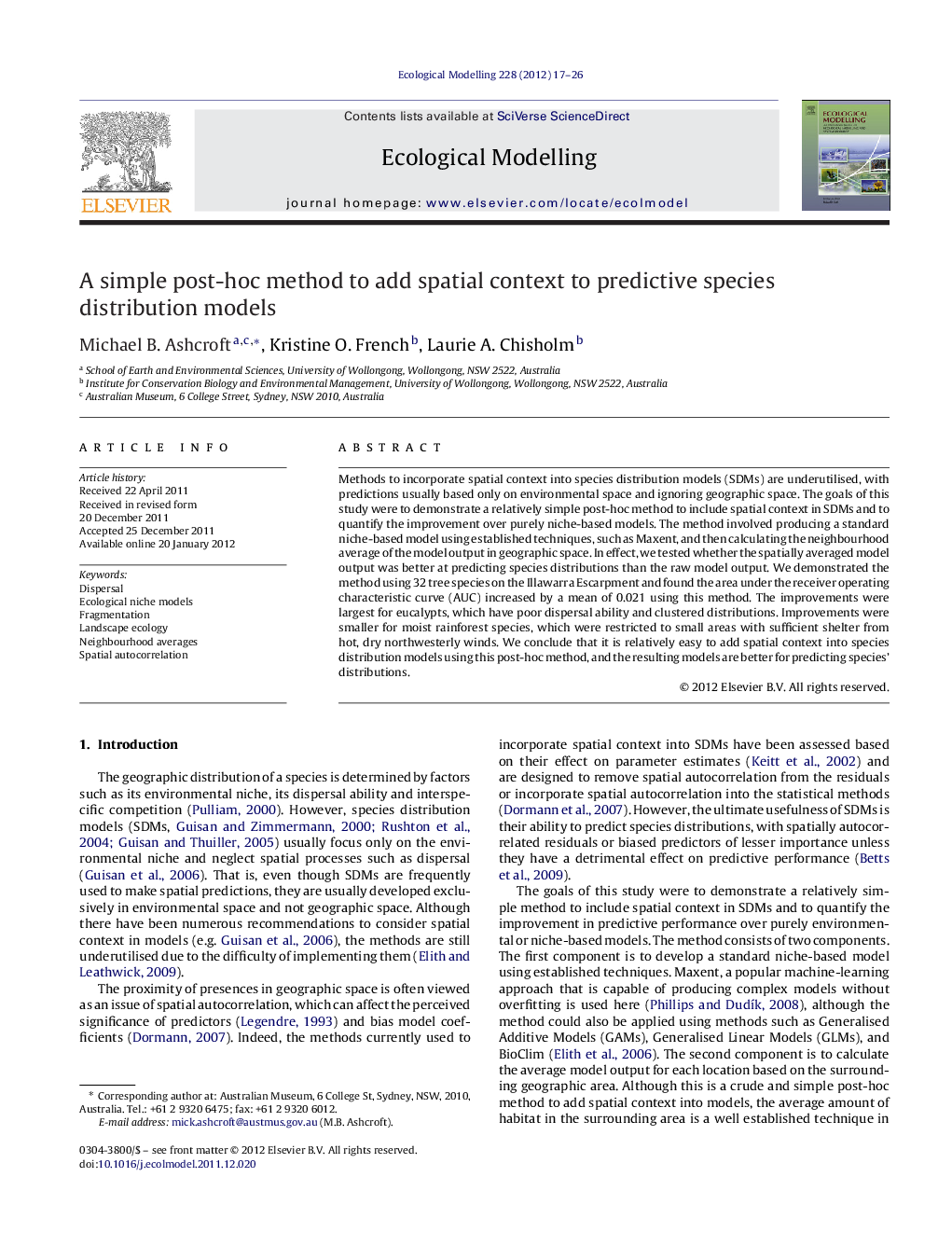| Article ID | Journal | Published Year | Pages | File Type |
|---|---|---|---|---|
| 4376578 | Ecological Modelling | 2012 | 10 Pages |
Methods to incorporate spatial context into species distribution models (SDMs) are underutilised, with predictions usually based only on environmental space and ignoring geographic space. The goals of this study were to demonstrate a relatively simple post-hoc method to include spatial context in SDMs and to quantify the improvement over purely niche-based models. The method involved producing a standard niche-based model using established techniques, such as Maxent, and then calculating the neighbourhood average of the model output in geographic space. In effect, we tested whether the spatially averaged model output was better at predicting species distributions than the raw model output. We demonstrated the method using 32 tree species on the Illawarra Escarpment and found the area under the receiver operating characteristic curve (AUC) increased by a mean of 0.021 using this method. The improvements were largest for eucalypts, which have poor dispersal ability and clustered distributions. Improvements were smaller for moist rainforest species, which were restricted to small areas with sufficient shelter from hot, dry northwesterly winds. We conclude that it is relatively easy to add spatial context into species distribution models using this post-hoc method, and the resulting models are better for predicting species’ distributions.
► We introduce and evaluate a novel method for adding spatial context into SDMs. ► Method can be used with presence-only datasets and any statistical method. ► The method is based on quantity of habitat rather than proximity of presences. ► Predictive ability is improved over purely niche-based models. ► Species with poor colonisation ability are restricted to large habitat patches.
